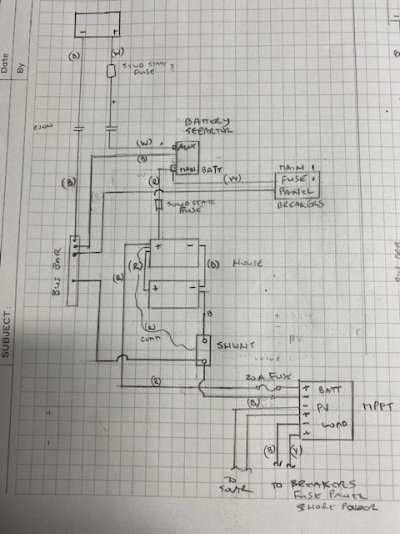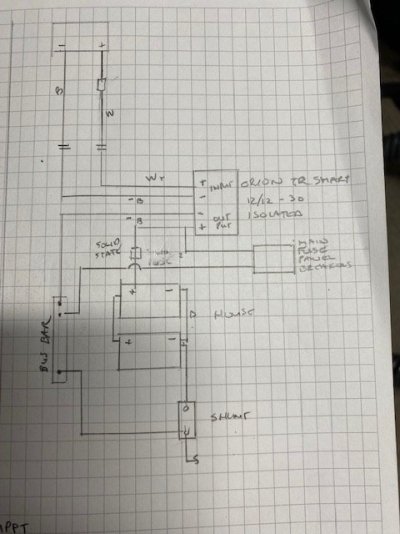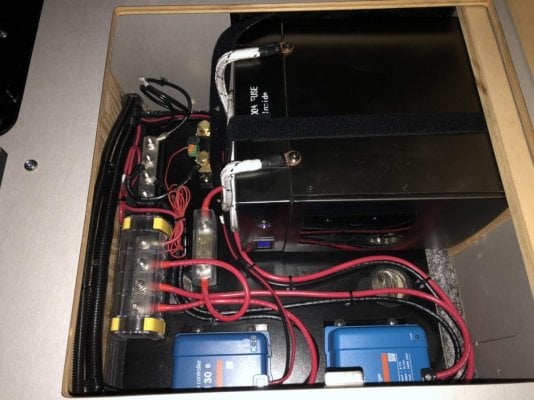Kokopelli
Senior Member
I have been upgrading the battery system in my Eagle. I got a Renogy smart 100ah Lithium battery and a Vitron MPPT 100/20 charge controller. The other evening I was checking things out and noticed a 2 amp draw on the system when I had nothing running. Didn't have time to trouble shoot then, so looked at it the next morning. The draw was .8 amps by then, and the battery had dropped to 88% overnight. I isolated it to my Sure Power 1314 Battery Separator which was warm. Took off the negative wire to it and the draw dropped to .1amps (the draw from the charge controller) and the separator cooled off. Plugged it back in and the draw stayed at .1. Started the truck, then turned it off and the draw was back to .8. Unplugged the connector from the truck to camper and it dropped back to .1. Overnight the battery only dropped to 99%. So I need a new battery separator.
I searched through posts here on battery separators and read on line and am a bit confused on what I should replace it with. Sounds like the Sure Power 1314 has a draw to it even when new. Folks here recommend the Blue Sea 7622ML and the Blue Sea 7619 (if you don't need to fancier controls). Then I read that using an ACR between a lithium house battery and the truck batter causes problems as they are not the same. The Blue Sea 7622 has minimal draw - does the Blue Sea7619 also or does it draw more like the Sure Power 1314? Can I use those with a Lithium house battery and a regular battery in the truck? Do I have to do anything special?
I don't have a lot of power draw in my truck so may not need to charge from Solar/house to vehicle, but if it doesn't hurt anything, I'm fine with it. I just want something simple I don't have to worry about, that won't take a lot of power, that will enable the truck to charge the house battery when driving, and that works well with the Renogy Lithium battery and Vitron controller. Or I could just forget all the and only use the solar.
Thoughts?
Thanks!!
-Rick
I searched through posts here on battery separators and read on line and am a bit confused on what I should replace it with. Sounds like the Sure Power 1314 has a draw to it even when new. Folks here recommend the Blue Sea 7622ML and the Blue Sea 7619 (if you don't need to fancier controls). Then I read that using an ACR between a lithium house battery and the truck batter causes problems as they are not the same. The Blue Sea 7622 has minimal draw - does the Blue Sea7619 also or does it draw more like the Sure Power 1314? Can I use those with a Lithium house battery and a regular battery in the truck? Do I have to do anything special?
I don't have a lot of power draw in my truck so may not need to charge from Solar/house to vehicle, but if it doesn't hurt anything, I'm fine with it. I just want something simple I don't have to worry about, that won't take a lot of power, that will enable the truck to charge the house battery when driving, and that works well with the Renogy Lithium battery and Vitron controller. Or I could just forget all the and only use the solar.
Thoughts?
Thanks!!
-Rick



